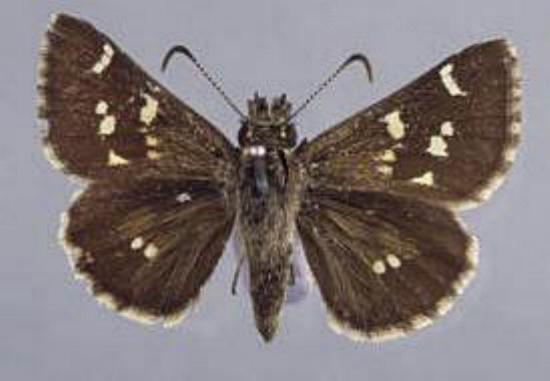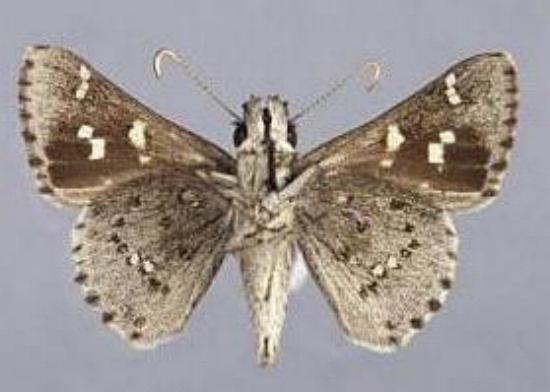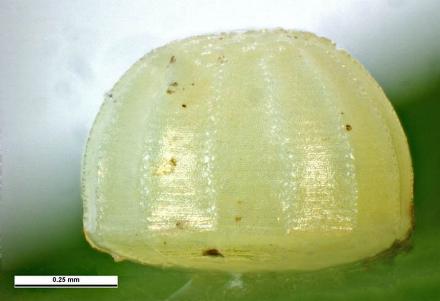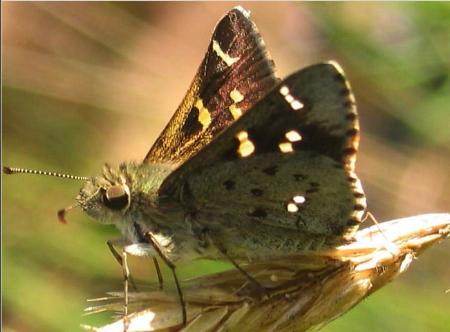
| Two-spotted Grass-skipper (previously known as Hesperilla tasmanicus) TRAPEZITINAE, HESPERIIDAE, HESPERIOIDEA | (donherbisonevans@yahoo.com) and Stella Crossley |

(Photo: courtesy of
Museums Victoria)

| Two-spotted Grass-skipper (previously known as Hesperilla tasmanicus) TRAPEZITINAE, HESPERIIDAE, HESPERIOIDEA | (donherbisonevans@yahoo.com) and Stella Crossley |

(Photo: courtesy of
Museums Victoria)
The Caterpillar of this species is reddish brown, greenish between segments, with a dark mid-dorsal line. The head is a patchy brown colour. The caterpillar grows to a length of about 2.5 cms. It feeds nocturnally on tussock grass (POACEAE) such as:
The caterpillar lives by day in a shelter formed by joining several grass stems together with silk in the middle of a tussock. In due course, it pupates in this same shelter.

The upper side of the adult butterfly is dark brown with a number of white spots on each wing. Each wing also has a narrow chequered border. Underneath, the wings are fawn with white spots of various sizes, each outlined in dark brown. The wing span is about 3 cms.

The eggs are pale green and are dome-shaped with about a dozen ribs. The eggs have a diameter of about 0.8 mm. They are laid singly on the underside of leaves of a foodplant.

The species is found in the mountains of :
Further reading :
Michael F. Braby,
Butterflies of Australia,
CSIRO Publishing, Melbourne 2000, vol. 1, pp 121-122.
William Henry Miskin,
Descriptions of some new species of Australian Hesperidae,
Proceedings of the Royal Society of Queensland,
Volume 6, Part 4 (1890), pp. 149-150.
 caterpillar |  butterflies |  Lepidoptera |  moths |  caterpillar |
(updated 30 April 2008, 3 April 2025)